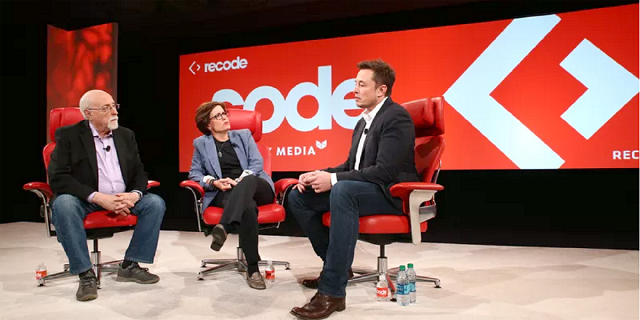Elon Musk suggests people of the future will need brain transplants to compete with evolved Artificial Intelligence
06/20/2016 / By Greg White

Among all the far-out, futuristic claims peddled by Elon Musk at this year’s annual Code Conference in Southern California, his ideas about “neural lace” were arguably the most interesting.
“We’re already a cyborg,” said Musk. “You have a digital version of yourself, a partial version of yourself online in the form of your emails, your social media, and all the things that you do.” We already have “super powers,” contends Musk, citing the world’s access to smartphones and personal computers. “You have more power than the president of the United States had 20 years ago. You can answer any question, you can video conference with anyone, anywhere. You can send messages to millions of people instantly. Just do incredible things.” However, that’s just the beginning.
The problem is artificial intelligence (A.I.) is advancing at a faster rate than humanity. So much so that Musk worries futuristic robotics would view humans as pets to be taken care of rather than masters who ought to be obeyed. In an effort to address this issue, Musk suggested we enhance our own cognitive capacities by mending them with a substrate known as “neural lace.”
A faster pace with neural lace
But what exactly is neural lace? As the Smithsonian Magazine noted, “a neural lace is, implanted via injection, a grid of wires only a few millimeters across can insinuate itself with living neurons and eavesdrop on their chatter, offering a way for electronics to interface with your brain activity.”
Actor Matt Damon expressed similar concerns about machines surpassing human intelligence during his commencement speech at MIT this week.
“The solution that seems the best one is to have an A.I. layer (on your brain), that can work well and symbiotically with you,” Musk said during the interview at Code Conference. “Just as your cortex works symbiotically with your limbic system, your third digital layer could work symbiotically with you.”
With the help of neural lace, Musk believes intelligence can be enhanced at a rate that meets and potentially beats A.I. This will allow humanity to keep A.I. on a leash and not the other way around.
Going with the blood flow
Walt Mossberg, who helped produce the conference, noted that implanting neural lace inside our skulls sounded like a dangerous procedure. In response, Musk said that although surgery is definitely an option, it could be possible to connect the neural lace through the bloodstream.
“Neurons are already heavy users of energy, so they need high blood flow,” Musk fired back. “So you automatically through your veins and arteries have a road network to your neurons.”
Musk added that it could be injected into the neck or throat. Although that may not sound comfortable, it’s not like decapitation, he said.
There has already been some financial investment into this kind of research. Last year, a team of chemists published a paper in Nature Nanotechnology that demonstrated they could inject neural lace into mice using a syringe. The mice survived the injection and the researchers used the implants to keep tabs on the critters’ brain activity.
Sources include:
Tagged Under: artificial intelligence, Elon Musk, neural lace


















